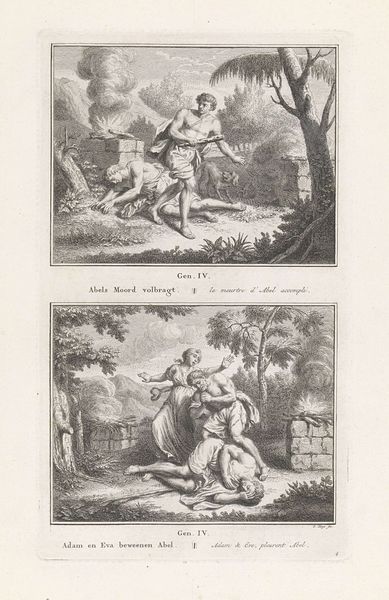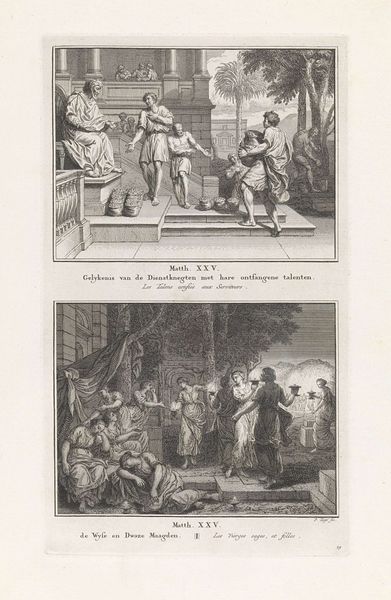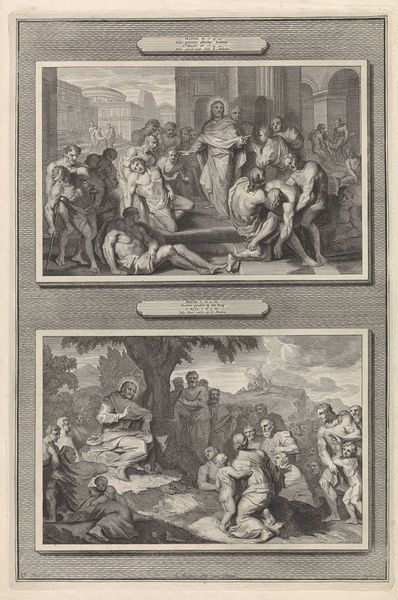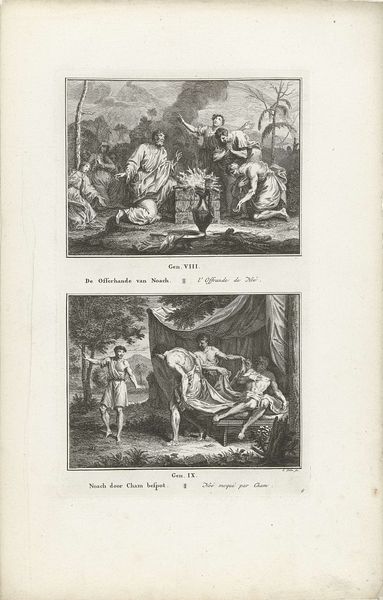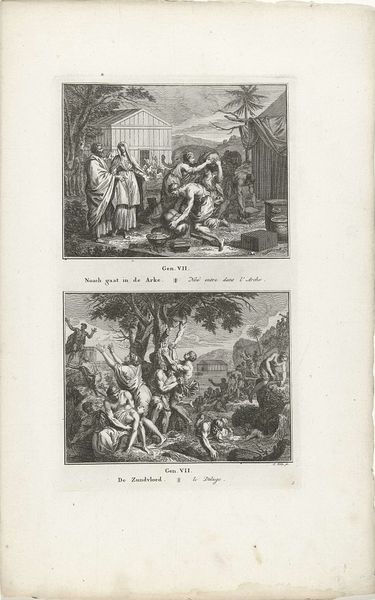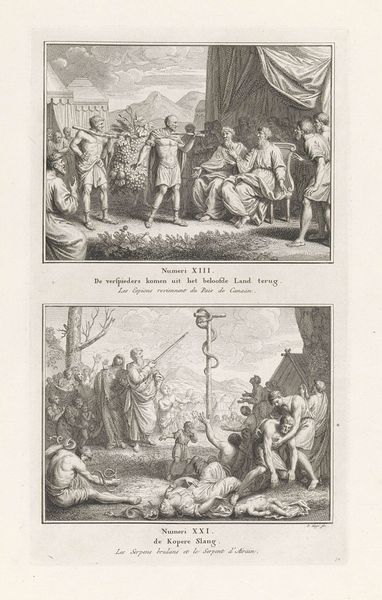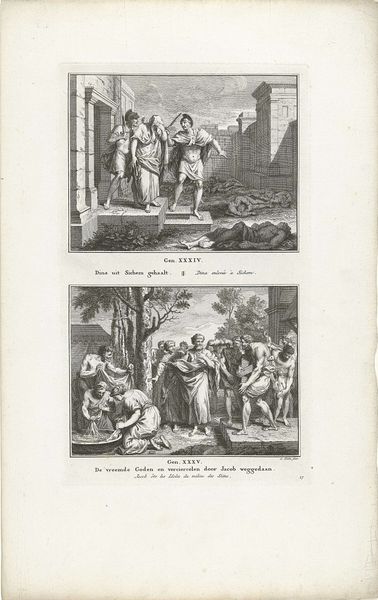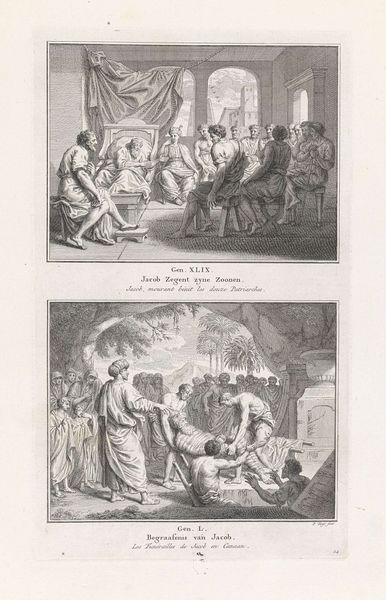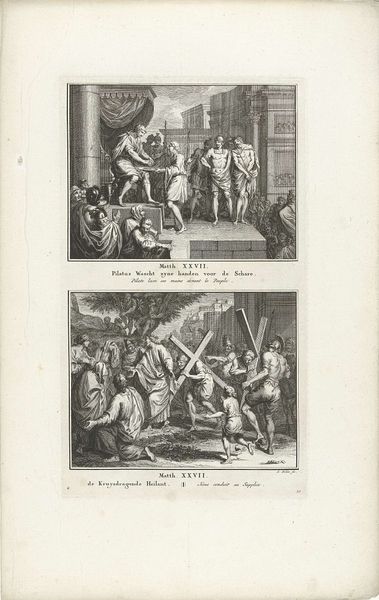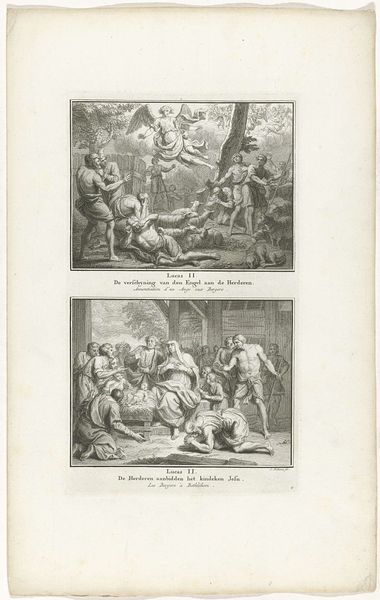
Lot en zijn dochters arriveren in Zoar / Lot en zijn dochters 1716 - 1791
0:00
0:00
pietertanje
Rijksmuseum
print, engraving
#
medieval
#
narrative-art
#
baroque
# print
#
white dominant colour
#
light coloured
#
old engraving style
#
figuration
#
limited contrast and shading
#
line
#
history-painting
#
repetition of white colour
#
remaining negative space
#
engraving
Dimensions: height 324 mm, width 190 mm
Copyright: Rijks Museum: Open Domain
Curator: This is an engraving by Pieter Tanjé, likely created between 1716 and 1791, titled "Lot and his Daughters Arriving in Zoar." It depicts two scenes, one above the other. Editor: My first impression is how starkly it renders a very uncomfortable narrative. The figures seem caught between classical idealism and something much more earthy. Curator: Yes, Tanjé has depicted the biblical story of Lot escaping Sodom with his daughters. The upper scene shows their arrival in Zoar, and the lower one depicts a very troubling scene. Editor: The starkness almost works to depersonalize it, doesn’t it? But let’s consider Tanjé’s material practice for a moment. As an engraver, his labor involves a meticulous, repetitive action upon the metal plate. The stark lines result from this. Does this intensive process shape our reading of the final image, creating a feeling of both constraint and inevitable action? Curator: It’s compelling how that repetitive action echoes the cyclical nature of the story. The tale of Sodom's destruction is one we recall through the symbols, repeated transgressions, of temptation, ruin, and—in this instance—family scandal. It almost forces a kind of emotional detachment, reflecting the distance of legend. Editor: That focus on production actually helps me reconsider what I previously dismissed as impersonal. The lines, and limited use of shading, contribute to the telling of this scene by essentially making the scene easier to replicate, widely circulate and become entrenched in social memory. Curator: Exactly, printmaking lends itself to wider cultural transmission, further cementing those symbols into the collective consciousness. Editor: The limited range of tonal values feels almost blunt, adding to this dissemination. Thinking about how prints and engravings operated within society really unlocks aspects about art production that you can miss focusing solely on the scene depicted. Curator: Well said! I find the image resonates differently now, recognizing the deep entanglement between historical narrative, personal and cultural meaning, and this method of widespread distribution. Editor: Absolutely. I’m more interested in how a more intimate and challenging scene gains a wider audience as a result of how the picture comes into being.
Comments
No comments
Be the first to comment and join the conversation on the ultimate creative platform.

